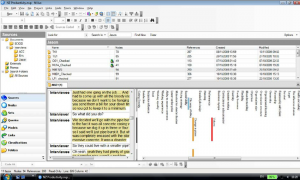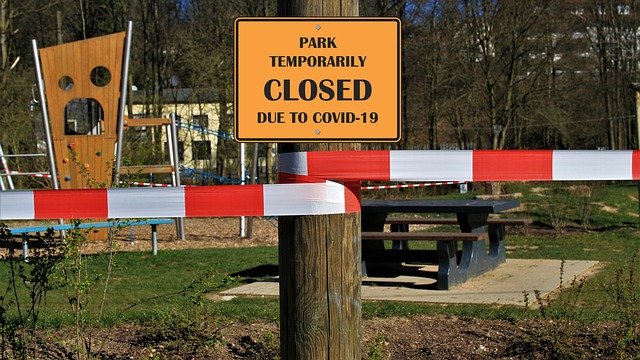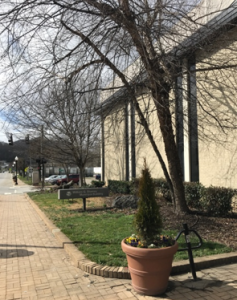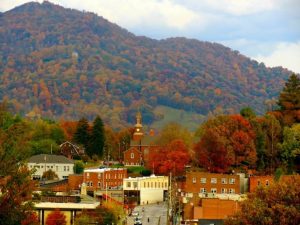Equity is a word that is floating around more in media coverage and professional discussions as Black Lives Matter protests continue this week. There are calls for dramatic policy changes to local, state, and federal governments around the issue of policing, but also other areas that can dramatically improve the lives of the historically oppressed – education, employment, social programs, and housing among them. In connection with my post last week, about making systemic change, I chose to write about a tool that can assist policymakers in creating more equitable policy, as well as an example of ncIMPACT’s current work in this arena.
One solution in the equity toolbox is to rely on data-driven policy in order to concentrate resources in the most needed areas, rather than relying on tradition or the judgment of those in power. This data does not just consist of surveys or graphs, but also listening to communities and respecting their expertise and self-determination in order to create policies and programs that fit them and their needs. Although this is often more time-intensive, policy made without the substantive participation of key stakeholders is often less effective, and may not have the intended outcomes for which it was created. ncIMPACT’s study designs often rely on mixed-methods and participatory research in order to discover needs and pilot solutions to equity-related problems, and I am fortunate to be working on several of them this summer.

One such project is the survey that ncIMPACT conducted with local government officials to discover the impact of COVID-19 on their organizations and communities and see how the School of Government can best respond. I will be completing the qualitative analysis of several open-ended questions for the 200 or so respondents from 89 NC counties. This survey will give us the chance to measure, in semi-real time, the impacts of COVID on a state-wide scale, as well as in regions with diverse economies and risk factors for the pandemic. Being able to complete work that will likely directly impact the SOG’s programs and products during this time is a very fulfilling professional experience. Although it may not directly be related to racial equity or police reform, COVID is already having disparate impacts on communities of color, which is likely to continue even after a vaccine is available. Understanding how local governments are responding, and what support they need, is a unique role the SOG can play in mitigating the negative effects of the pandemic and making North Carolina a more equitable place.







 r my ongoing questions, including the ones for this interview! As they explained, to work in these positions, a person must have a strong understanding of local government and “everything that happens in town hall.” Serving in the position of Accounting Clerk involves more than just answering questions; they also process financial transactions and collect payments. Occasionally, their duties take them outside the office where they have participated in everything from working the Labor Day concert to driving a utility vehicle alongside town officials in the Christmas parade.
r my ongoing questions, including the ones for this interview! As they explained, to work in these positions, a person must have a strong understanding of local government and “everything that happens in town hall.” Serving in the position of Accounting Clerk involves more than just answering questions; they also process financial transactions and collect payments. Occasionally, their duties take them outside the office where they have participated in everything from working the Labor Day concert to driving a utility vehicle alongside town officials in the Christmas parade. I have often heard local government employees explain that they love their jobs because each day brings new challenges and opportunities. The same has been true in my PWE. Last week, the town manager sent me an unexpected and fun assignment. I planned to start this week continuing my research on local ordinances but instead had the opportunity to write a report for the town’s planned upcoming dog park. Prior to this week, I knew nothing about dog parks, so I really enjoyed researching the topic and writing the report. Did you know the top citizen priorities for dog parks are typically cleanliness, shade, and water? I discovered best practices related to everything from amenities to location to surface materials!
I have often heard local government employees explain that they love their jobs because each day brings new challenges and opportunities. The same has been true in my PWE. Last week, the town manager sent me an unexpected and fun assignment. I planned to start this week continuing my research on local ordinances but instead had the opportunity to write a report for the town’s planned upcoming dog park. Prior to this week, I knew nothing about dog parks, so I really enjoyed researching the topic and writing the report. Did you know the top citizen priorities for dog parks are typically cleanliness, shade, and water? I discovered best practices related to everything from amenities to location to surface materials!
 effectively without knowing the Town rules, right?
effectively without knowing the Town rules, right? On Monday, I began my PWE in the office of the town manager in Canton, North Carolina. Canton is located in Haywood County just twenty miles outside of Asheville. Surrounded by the Appalachian Mountains. Canton attracts adventure seekers who enjoy hiking the surrounding trails that include popular landmarks like Cold Mountain, floating down the Pigeon River that runs through town, or visiting downtown businesses that feature delicious southern food and locally made goods. In the center of town sits a large papermill that manufactures Starbucks coffee cups, juice cartons, and other paper products. Due to the central location and large size of the mill, the locals affectionately refer to Canton as “Papertown.”
On Monday, I began my PWE in the office of the town manager in Canton, North Carolina. Canton is located in Haywood County just twenty miles outside of Asheville. Surrounded by the Appalachian Mountains. Canton attracts adventure seekers who enjoy hiking the surrounding trails that include popular landmarks like Cold Mountain, floating down the Pigeon River that runs through town, or visiting downtown businesses that feature delicious southern food and locally made goods. In the center of town sits a large papermill that manufactures Starbucks coffee cups, juice cartons, and other paper products. Due to the central location and large size of the mill, the locals affectionately refer to Canton as “Papertown.”